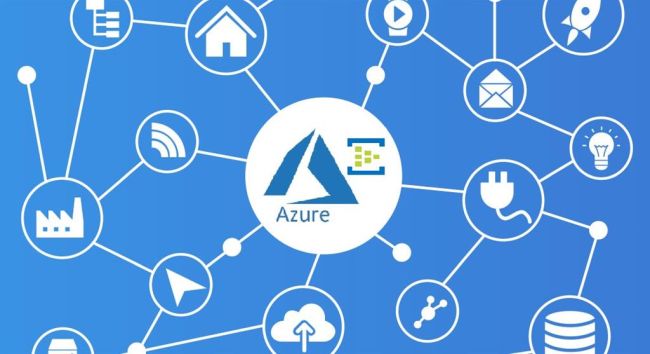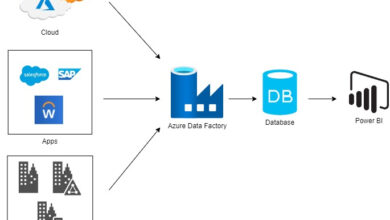Streamlining IoT Integration with Azure IoT Plug and Play
Introduction
The Internet of Things (IoT) has experienced rapid growth, connecting billions of devices and generating a massive amount of data. However, this growth has also brought complexity when it comes to device integration, data interpretation, and application development. Thankfully, Microsoft Azure has introduced IoT Plug and Play, a groundbreaking approach that simplifies the process of connecting and managing IoT devices. In this article, we will explore the concept of IoT Plug and Play, discuss its benefits, and how it has the potential to reshape the future of IoT deployment.
IoT Plug and Play: Simplifying Device Integration
In the past, integrating IoT devices into applications required custom code and configurations to handle different device models and data formats. However, IoT Plug and Play changes all that by introducing a standardized approach, allowing devices to seamlessly communicate with the cloud and applications. This significantly reduces development time and effort.
How IoT Plug and Play Works
- Device Model Definitions: Manufacturers define device models using the Digital Twin Definition Language (DTDL), outlining device capabilities, properties, and interactions.
- Plug and Play Certified Devices: Devices that adhere to the defined models are certified as IoT Plug and Play devices. This certification ensures that devices can connect to Azure services without requiring extensive custom code.
- Automatic Device Recognition: When a Plug and Play certified device connects to Azure, the cloud automatically recognizes the device based on its defined model. This enables automatic provisioning, data ingestion, and interaction handling.
Benefits of IoT Plug and Play
- Rapid Integration: With standardized device models, developers can easily integrate new devices into applications without writing custom code for each device.
- Reduced Development Time: IoT Plug and Play speeds up development by eliminating the need to create custom communication protocols and data parsers.
- Interoperability: Plug and Play certified devices from different manufacturers can seamlessly interact with the same cloud applications, promoting interoperability.
- Future-Proofing: As device models evolve, applications can adapt to new features and capabilities without significant modifications.
IoT Plug and Play Devices
- Avnet Guardian 100: This device is designed for asset tracking and remote monitoring. With Plug and Play certification, it seamlessly integrates into Azure, providing real-time insights into asset locations and conditions.
- STMicroelectronics STEVAL-WESU1: A wearable development kit for fitness and health applications. IoT Plug and Play enables swift integration, allowing developers to focus on building innovative health solutions.
- NXP i.MX RT106A EVK: A development board designed for industrial applications. IoT Plug and Play certification simplifies its integration into industrial IoT solutions, enhancing real-time monitoring and control.
Transforming Industries with IoT Plug and Play
- Smart Buildings: IoT Plug and Play simplifies the integration of diverse building management devices, enabling centralized control and real-time monitoring of HVAC, lighting, and security systems.
- Manufacturing: In the manufacturing sector, IoT Plug and Play streamlines the deployment of sensors and machines, optimizing production processes and enabling predictive maintenance.
- Healthcare: Medical devices can be easily integrated, facilitating patient monitoring, asset tracking, and ensuring compliance with regulatory standards.
- Agriculture: Plug and Play certified sensors in agriculture enable precision farming, enhancing crop management and resource utilization.
The Future of IoT Plug and Play
IoT Plug and Play is poised to reshape the IoT landscape by promoting a standardized and interoperable ecosystem. As more devices become certified and model definitions expand, the benefits will continue to increase.
- Diverse Device Integration: A wide range of IoT devices, from edge sensors to industrial machinery, will seamlessly connect to cloud applications.
- Ecosystem Expansion: Device manufacturers will adopt the Plug and Play approach, creating a rich ecosystem of interoperable devices.
- Innovation Acceleration: Developers can focus on innovating applications and services rather than dealing with device integration challenges.
Conclusion
IoT Plug and Play represents a significant shift in IoT integration, simplifying the complex process of connecting devices to applications. By standardizing device models and interactions, Microsoft Azure has ushered in an era where devices can effortlessly communicate with the cloud, reducing development complexities and accelerating time-to-market. As IoT Plug and Play gains traction, industries across the spectrum will experience enhanced efficiency, scalability, and innovation, propelling IoT into a new era of seamless connectivity and transformation.
Know more about our company at Skrots. Know more about our services at Skrots Services, Also checkout all other blogs at Blog at Skrots. We, at Skrots, offer similar services as mentioned in the article. We streamline IoT integration with our expertise in Azure IoT Plug and Play. Our team of skilled professionals can assist in connecting and managing IoT devices, reducing development time and effort. Visit https://skrots.com to learn more about how we can help you streamline your IoT integration process.




